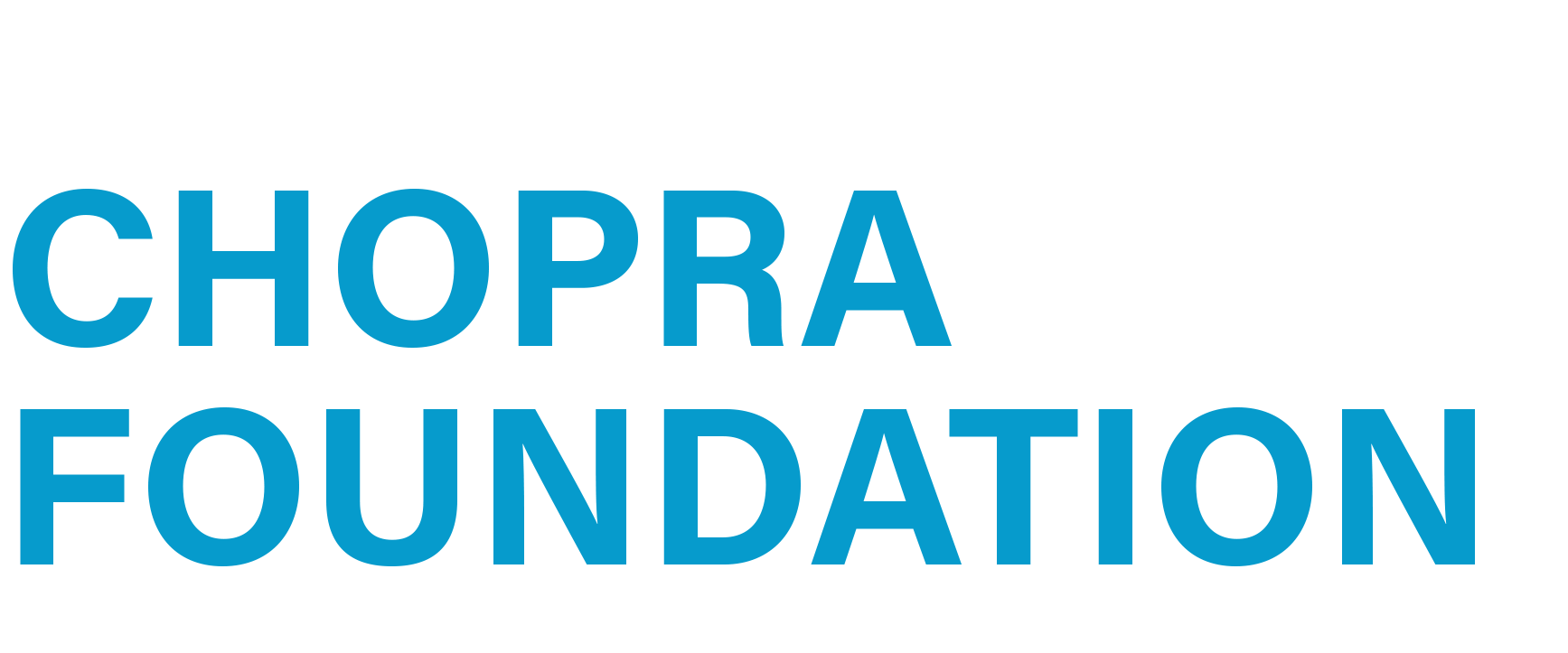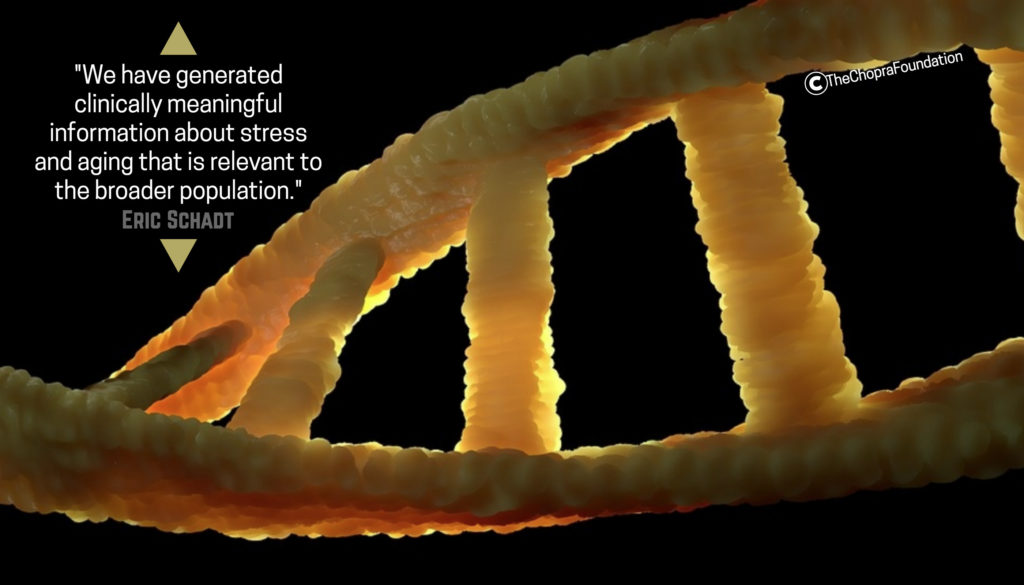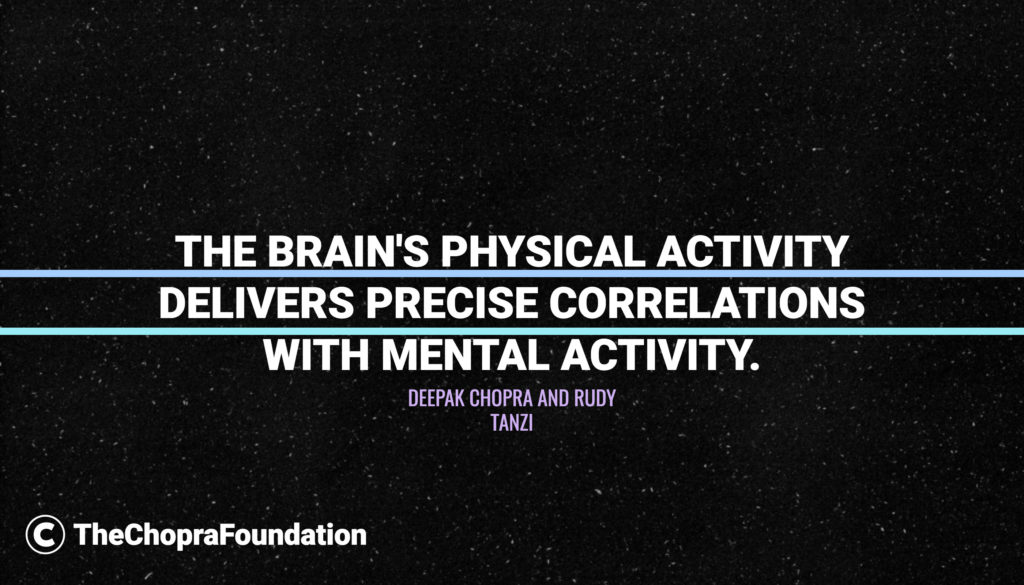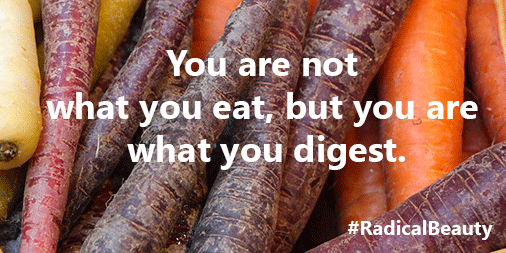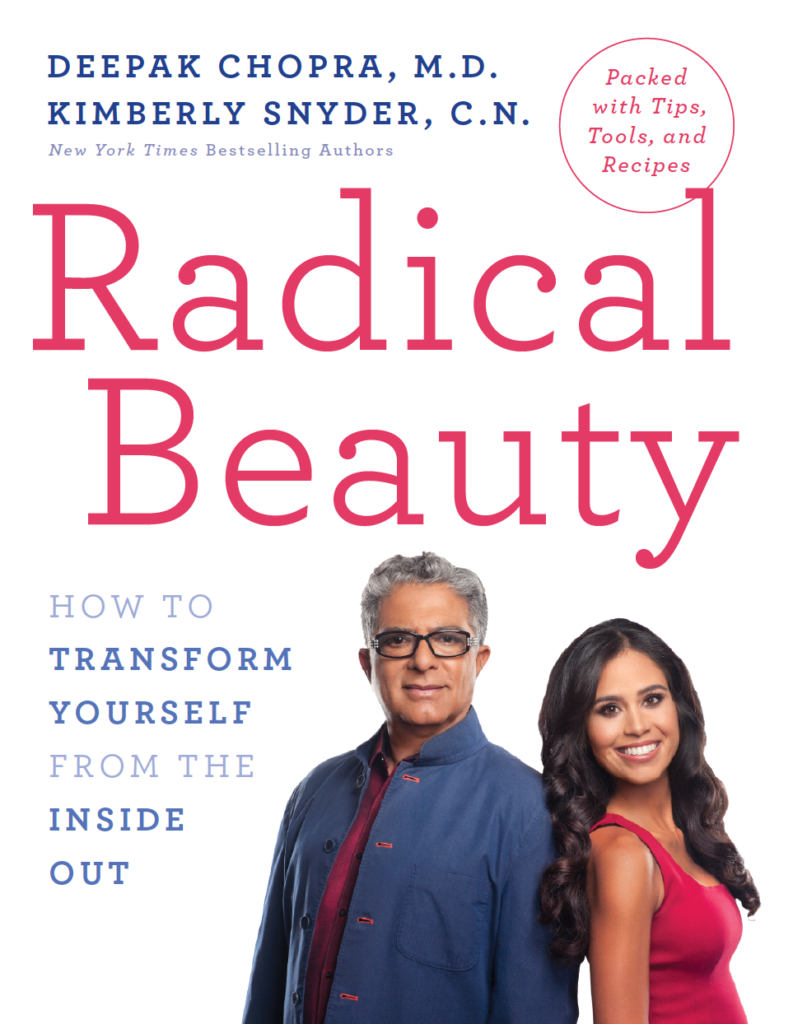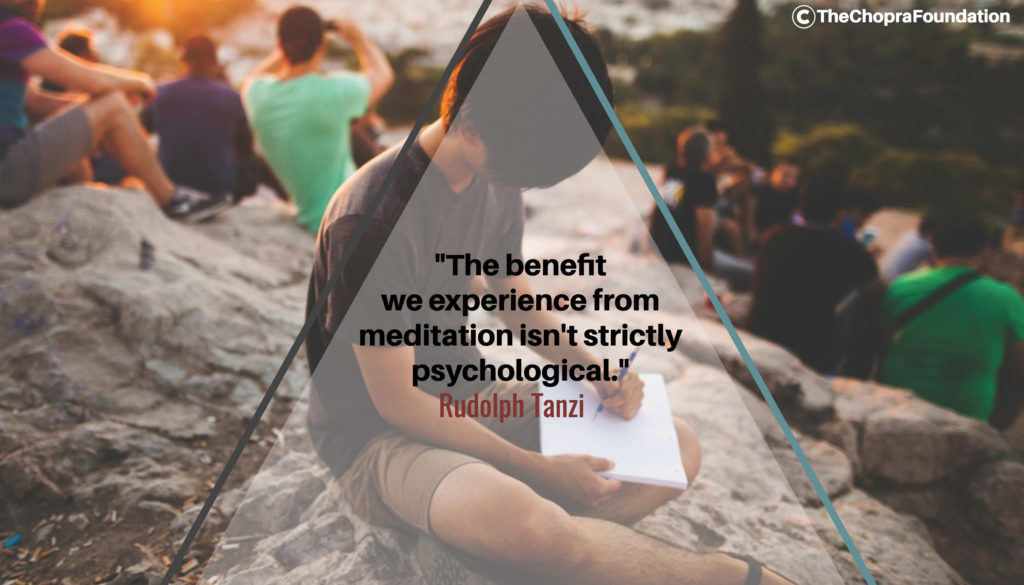Whether they think about it or not, people take sides about reality. The dividing line separating science from spirituality was crossed long ago, and it doesn’t take a lesson in philosophy or theology to pick up a smartphone. Therefore, by default reality for everyone is scientific reality. Let’s set the old science versus spirituality divide aside and simply accept that science has taken a journey to the very origin of reality and returned with a story everyone essentially buys into by virtue of how rational and useful it is to live by science.
To get to the origin of reality, science had to scrub away a lot of misinformation and misdirection. The five senses are the source of most misinformation, but so is the brain itself. When scrubbed down to the most basic level, reality as explained in quantum physics has no color, sight, sound, taste, or smell. So much for what the five senses consider real. Scrub even closer to the bone, and time and space vanish, too, even though the human brain depends upon both. When atoms and molecules vanish into probability waves, so does the brain–it has no privileged position in the universe. Surprising as it sounds, this whole apparatus of scientific experiments and useful technology can be scrubbed away until you reach a zero point, a timeless, dimensionless state from which the universe sprang.
Here’s the most fascinating part. The universe didn’t spring into existence with the big bang 13.8 billion years ago. That episode requires the existence of time and space. The big bang is an event constructed in the human mind as if we were there to witness it. “If” you could take the human brain back to the origin of the universe, the big bang is totally real. But that “if” is impossible. A human brain would disintegrate long before you got to the source of the big bang. In fact, the big bang itself had its own origin, which preceded time, space, matter, and energy. Even to visualize the big bang as an explosion is totally incorrect, because explosions only occur in the context of time and space.
So we are left with a startling conclusion. The origin of reality is outside our ability to explain it. Even mathematics, the last stand of the rational mind, can’t be proven to exist outside our mental awareness of numbers. Nothing can be shown to exist outside our awareness. This realization has caused a crisis in theoretical physics, among other areas like philosophy and theology, because on the one hand, the version of reality scrubbed down to zero seems absolutely valid while on the other hand, scrubbed-down reality has nothing we can see, touch, measure, experiment with, gather data about, or even conceive. (Every physicist I’ve debated concedes that all of theoretical physics exists in mathematical imagination, which is itself an activity in awareness.)
Let’s agree that reality is here and that it needs explaining. You can start with a spiritual or religious view of reality and take a parallel journey that scrubs it down to zero, or very close. “In the beginning was the Word, and the Word was with God” or “The Word was made flesh.” Those phrases speak of a creation that emerges from nothing more than a concept, but since this concept is empty, being merely some kind of “word,” there’s a huge problem. The original word emerged from an inconceivable state. So once again, starting from the very opposite worldview of science, scrubbing reality down to its origin leaves you with something inconceivable.
How do we get out of this paradoxical trap, where the mind takes us on a journey to find out where we came from, only to arrive at a place that has a sign saying, “Please leave your mind at the door. Only then can you enter”? The way out of this trap is to stop asking the wrong questions and start asking the right ones. Instead of asking how the world “out there” emerged from zero (what some physicists call the emergence of something from nothing), we could start with the only thing we know for sure and go from there.
What we know for sure is that we experience reality, and therefore the starting point is no longer zero. In truth, we live at the starting point of reality every day and every minute. Reality is experience itself. It’s a fluid, ever-renewing process that continually spins out the now. Unlike a telescope floating in deep space sending back data from distant galaxies, our minds are dynamic, active, and creative. Set aside the fruits of this creativity. Every mind travels a different arc of life experience. But this diversity disguises a common thread.
If you look at what your mind is doing right this minute, the following things are always occurring:
- 1. There is a constant stream of thoughts, feelings, sensations, and images.
- 2. We identify with this mental activity, using it to create our personal reality.
- 3. Confronting the bewildering phenomena that fills reality and floods the senses, we give words to each process, thus stopping the phenomenon in its tracks. A mystery like time turns into “time,” a term we grasp the way we grasp “rock” or “tree.”
- 4. In this way, our chief creative act is to manufacture a world of objects that perfectly fits one species of consciousness, our own. Animals exist in this objectified world, but we have no entry into their species of consciousness.
- 5. Therefore, we feel secure in our self-created reality, as if it existed before human beings appeared. In fact, there is no reality outside the mental activity taking place right this minute in our awareness.
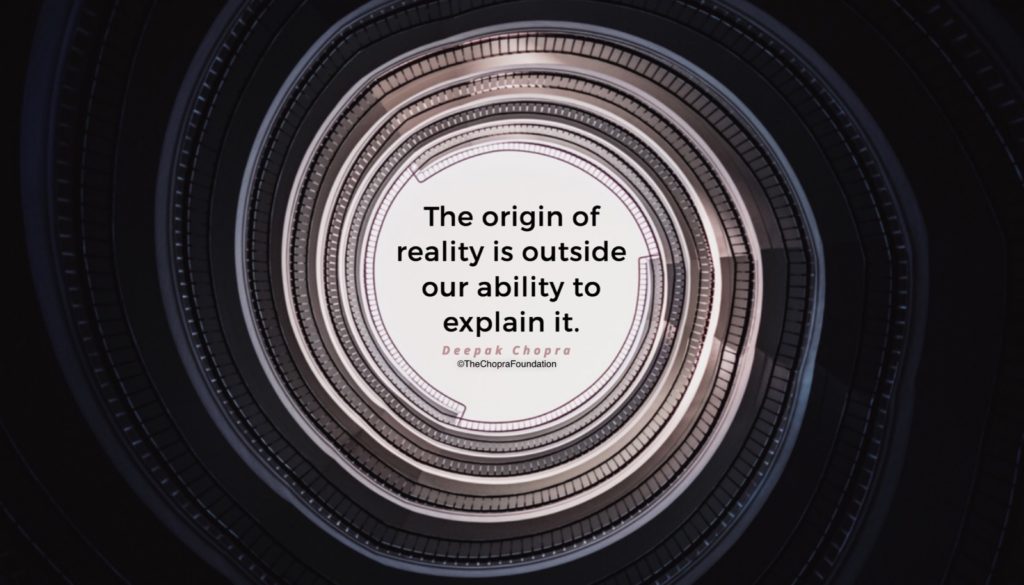
It can take a bit of time to nail down each of these points, but people will accept them as unarguable given a chance to absorb what is going on. When you begin with “reality is experience in awareness,” there is a totally level playing field. Think about having a dream one night where Einstein, Buddha, Plato, and Mozart came to visit you. They start talking about how reality looks to them, each having a strong separate awareness of what their own reality is like. Yet you have no trouble knowing that Einstein, Buddha, Plato, and Mozart are in the same dream, inhabiting the same dreamscape. The fact that they play different roles in the dreamscape doesn’t change that basic shared fact.
It turns out, therefore, that reality can be explained as a state of awareness, and although there are billions of people playing out their own state of awareness, the big tent is one awareness that we all share. it is the awareness of having an experience and knowing what the experience is. Finding such a unified basis for reality should come as a tremendous relief, and it will, I believe, revolutionize life on Earth. We have all accepted science as the measure of the real world, yet soon the news will spread that science has scrubbed reality down to the zero point. This in essence gives us the freedom to start over again. We each have the opportunity to scrub our personal reality down, to discard what isn’t working and retain only what does work.
Here, I’d like to suggest, is what does work:
- 1. Creating personal reality as each person’s joyful challenge.
- 2. Seeing past the mask of materialism in order to elevate the inner world of awareness.
- 3. Fostering the evolution of consciousness as a self-directed project.
- 4. Granting equal status to everyone as conscious agents, equipped with the same ability to shape reality.
- 5. Refusing to buy into the state of separation, replacing it with a state of unity based on pure consciousness.
When we focus on these things, reality will shift dramatically. Once you realize that everything, absolutely everything, is an excitation in consciousness, the everyday world gets reduced to the same status as a dreamscape. Time, space, matter, and energy each tell a different story; each has a different feel. But you exist at the center of the dreamscape, knowing that time, space, matter, and energy are all excitations in consciousness. And then comes the kicker: You are that consciousness. This must be what Buddha experienced in a flash sitting under the Bodhi tree. The phenomenal world dissolved, replaced by one thing, consciousness itself. The same realization has been repeated countless times in other minds; the circumstances will look outwardly different, but the result is always the same. At the source of human awareness is the origin of reality. One history unfolds this truth on a mass scale, nothing will ever be the same again.
Deepak Chopra MD, FACP, founder of The Chopra Foundation and co-founder of The Chopra Center for Wellbeing, is a world-renowned pioneer in integrative medicine and personal transformation, and is Board Certified in Internal Medicine, Endocrinology and Metabolism. He is a Fellow of the American College of Physicians and a member of the American Association of Clinical Endocrinologists. The World Post and The Huffington Post global internet survey ranked Chopra #17 influential thinker in the world and #1 in Medicine. Chopra is the author of more than 80 books translated into over 43 languages, including numerous New York Times bestsellers. His latest books are Super Genes co-authored with Rudolph Tanzi, PhD and Quantum Healing (Revised and Updated): Exploring the Frontiers of Mind/Body Medicine. www.deepakchopra.com
